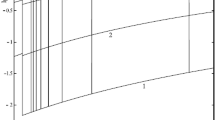Abstract
IT is a well-established fact that energy production in stars is due to the thermonuclear transformation of hydrogen into helium. Since hydrogen forms about one half of normal stellar material, the rate of its consumption, that is, the luminosity of the star, determines the stellar life-span; in the case of our sun it can be calculated to be about fifty thousand million years, which is very long as compared with the estimated age of the stellar universe. Since, however, stellar luminosity (hydrogen consumption) increases very rapidly with stellar mass (hydrogen content), the life-spans of brighter stars are considerably shorter. Thus stars of about zero absolute magnitude would run through their hydrogen evolution in a few thousand million years, that is, in a period of time which is generally accepted as representing the age of our universe. Indeed, we notice that the stars of zero absolute magnitude seem to represent a demarcation line in the stellar population of our galaxy. Thus the main sequence of the Russell–Hertzsprung diagram shows a noticeable discontinuity at that particular point. The brighter stars are very scarce in space and are in a state of rapid axial rotation; the fainter stars are very abundant and scarcely rotate at all. Also, within stellar population II, as defined by Baade (the regions of the galaxy where no interstellar material is present), the upper part of the main sequence is completely absent.
Similar content being viewed by others
Author information
Authors and Affiliations
Rights and permissions
About this article
Cite this article
GAMOW, G. Hydrogen Exhaustion and Explosions of Stars. Nature 168, 72–73 (1951). https://doi.org/10.1038/168072a0
Issue Date:
DOI: https://doi.org/10.1038/168072a0
- Springer Nature Limited





